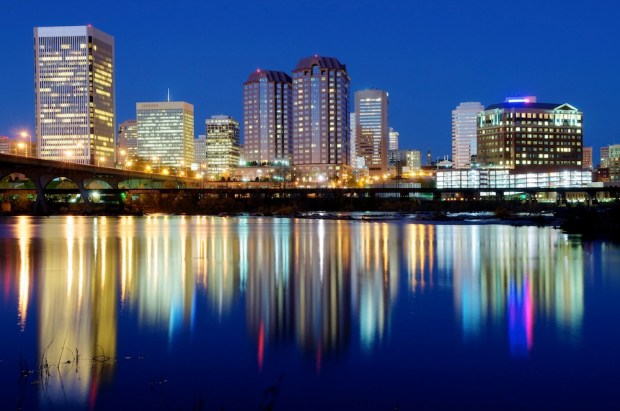Richmond’s Changing Storefront Scene

Richmond Virginia going into the 2016 presidential election today is a very different place than the Richmond Virginia on the going into the 1996 race 20 years ago. The most obvious change is political – Richmond’s home state of Virginia in 1996 was solidly red state where – outside a few spots in Charlottesville and NOVA – what are regionally known as “yellow dog democrats” outnumbered liberal democrats.
“Well about 20 years ago – and they ain’t around so much now but they’re still around. See this is the capital of the confederacy, right, and so there was people who were still pretty mad at Lincoln whose whole politics was that they’d vote for a yellow-dog before they’d vote for anybody from the party of Lincoln,” on local tobacconist explained.
When we confessed that we were from Boston and had never heard this term – Massachusetts democrats are so entirely serious Democratic party that the dead have occasionally been known to vote on their behalf (though admittedly our zombie population is not as politically active as Chicago’s). He noted however, it didn’t much matter.
“Well they don’t exist now really – except maybe in the real Southwest part of the state – it’s really a very different place than it was in the 90’s.”
Pesh’s view was far from unique – of the 15 or so storefront business owners we spoke to especially those who’d been operating for a while – most noted that Virginia was a very different place than it was a decade or two ago – in fact most merchants in Richmond noted that Virginia was two very different states than it used to be.
Northern part of the state in the ever expanding greater DC suburbs looking ever more demographically similar to the Mid Atlantic, while the Southwest of the state is increasingly demographically similar to the states of the South and Lower Midwest.
And standing in the middle of those demographic shifts in Richmond – literally. A little over 100 miles from south west from DC and a little over 100 miles northwest of Lynchburg (home of Jerry Falwell’s Liberty University) Richmond has seen its demographics shift greatly in the last 20 years.
“The area’s is clearly more affluent than it used to be – that’s just obvious over the last 20 years – safer too,” noted Jimmy Tsamouras – head Chef and owner of Dots Back Diner.
And Tsamouras is certainly right on that account. In 1996 the median income in the area was around $21,000 per year – as of 2016 it is around $52,000. Some of that can be accounted for by inflation driving up median incomes – but even adjusted for inflation average income in Richmond VA in 1996 (measured in 2016 dollars) was about $32,000. That means that in two decades, the median income in Richmond is up 65 percent.
And that increase in income has largely been a boon to mainstreet business – according to those we talk to.
“We run a restaurant that charges a minimum of $25 per entree,” the owner of a fashionable microbrewery and restaurant told us while asking we refrain from publishing their name. “Even in the year 2000 that just would have probably been a suicidally stupid business idea in this area – there just wasn’t a market – when we opened in 2005 we were still pretty rare but we are now one of dozens.”
“We’ve definitely seen our buyer base change a lot – probably for the last decade but I feel like it has been going a lot faster lately. The customers are younger – that obvious – and they are definitely asking for different stuff,” Marco Caroras proprietor of West Side jewelers noted.
But, he said, his family’s business has been in Richmond for five decades – and he also noted that the reports are it suddenly changing are also a little misleading.
“Cities are always changing, and Richmond because of where it is – it is always in flux. So you know, sure I’m selling more custom orders to younger buyers – but the change is the norm.”
But others were less sanguine about the changes, like Mark D’Amato at Commonwealth Carpet cleaners.
“Sure new customers are great – but more industrial area getting zoned mixed use and getting turned into condos- that’s not good for small businesses like me. I’ve had to move my shop twice in the last two year because of rents – and I’m probably going to move again. “
However, whether they thought the growth and change was an incontrovertible good – or one perhaps tempered by losses – everyone we spoke to agreed that it was the wave of the future.
And, for most, it was a future they could look forward to.
Which isn’t to say that Richmond’s merchants didn’t have their share of concerns about the future or headwinds still to face.
But we’ll have more on that next week when give you a ground tour of the Storefront Business Conditions around the nation – just in time for the voters of those states to go to the polls for Super Tuesday.
Stay tuned.
